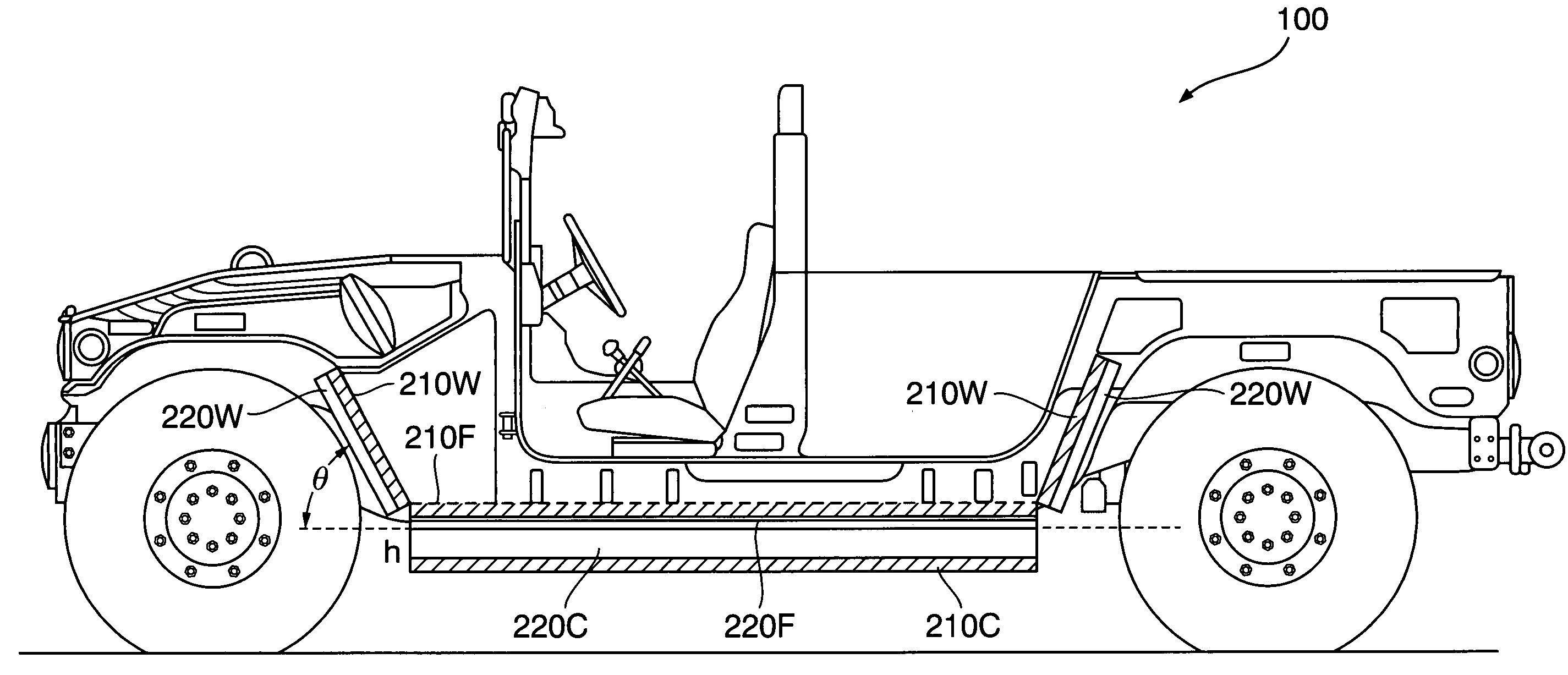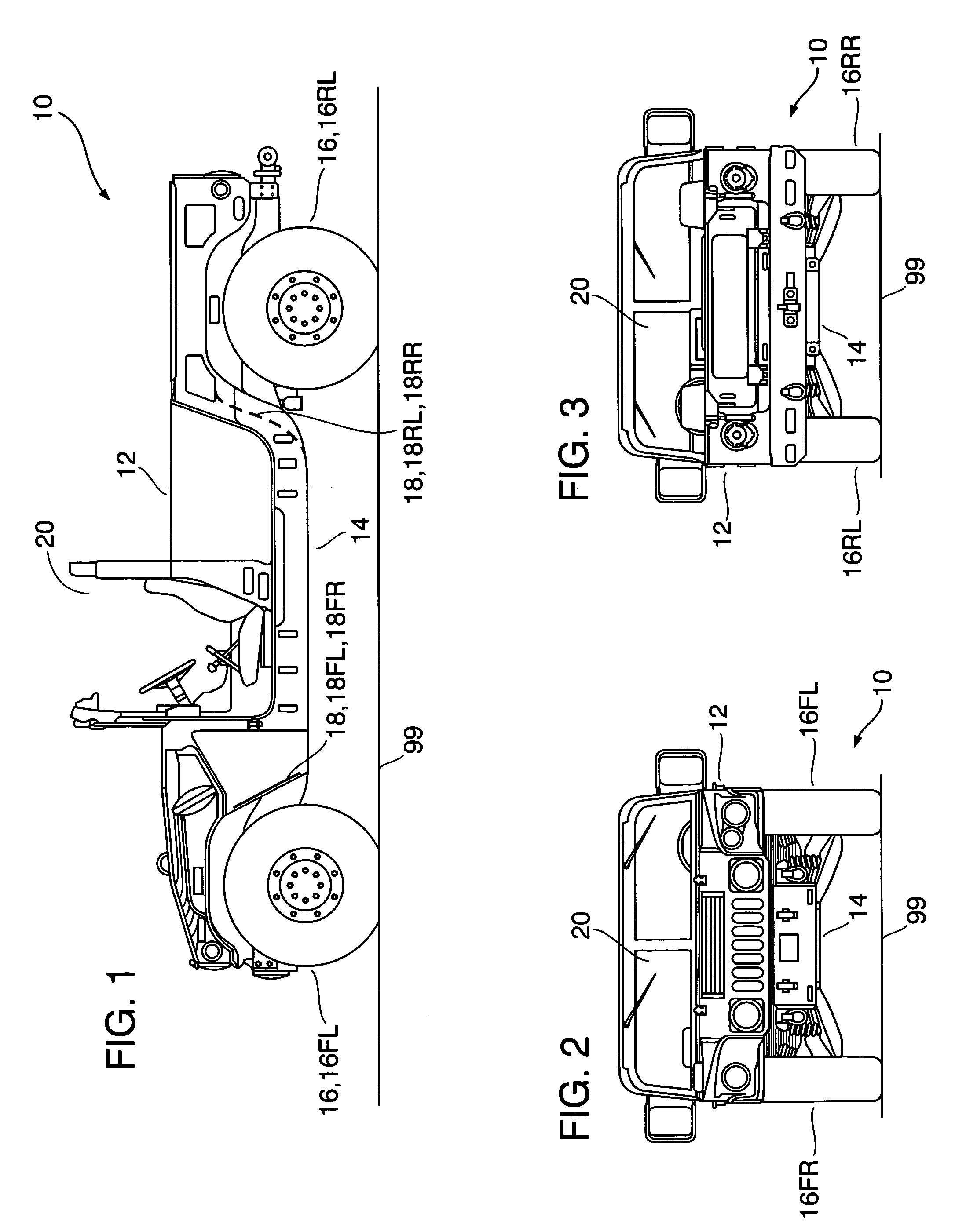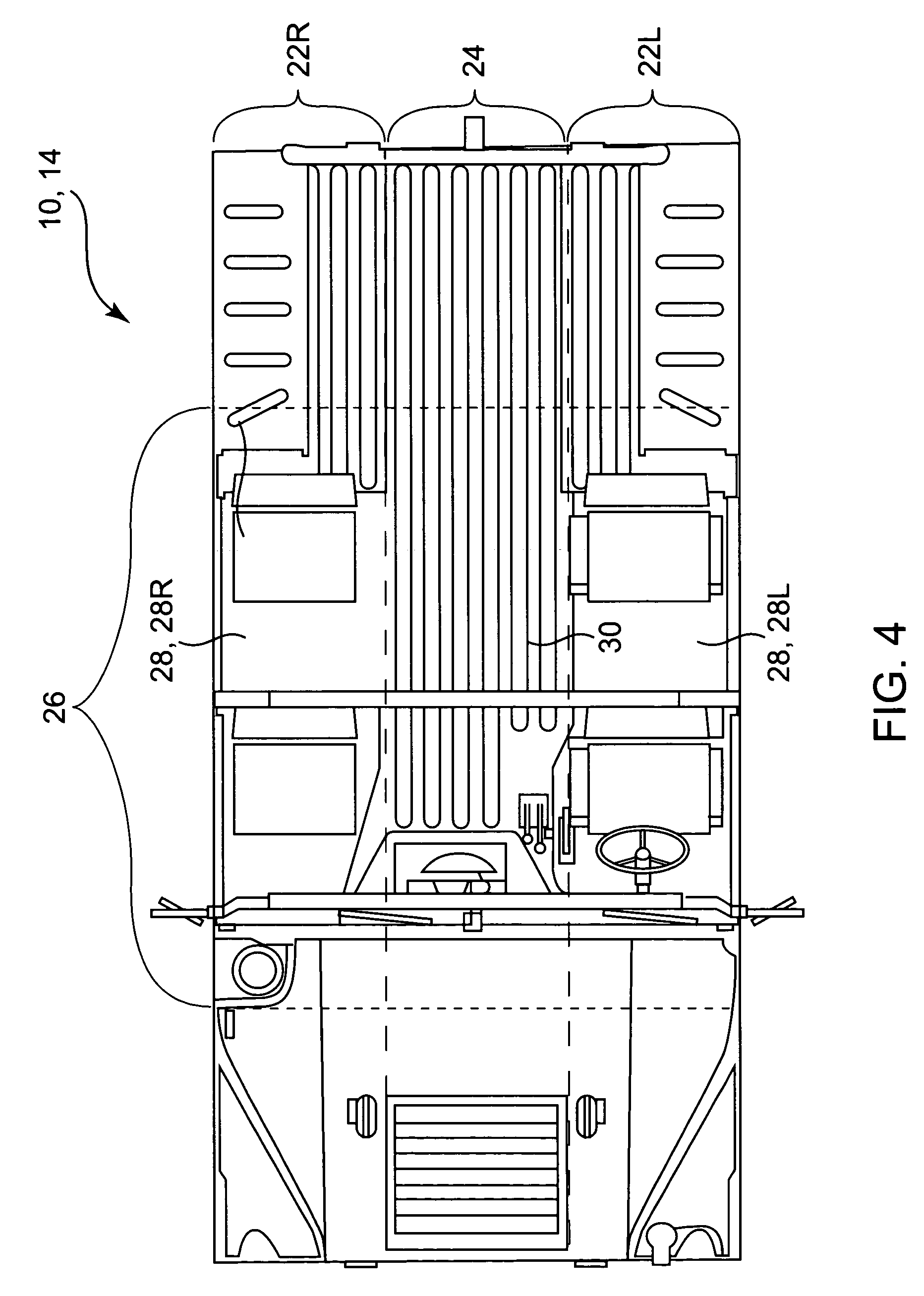Mine and collision protection for passenger vehicle
a passenger vehicle and collision protection technology, applied in the direction of shields, roofs, pedestrian/occupant safety arrangements, etc., can solve the problems of vehicle damage and beyond repair, and achieve the effects of preventing fracture penetration, high strain-rate dependence and hardening, and preventing structural damag
- Summary
- Abstract
- Description
- Claims
- Application Information
AI Technical Summary
Benefits of technology
Problems solved by technology
Method used
Image
Examples
Embodiment Construction
[0027]Referring now to FIG. 1 through FIG. 4, high mobility multipurpose wheeled vehicle (HMMWV) 10 is a typical military passenger vehicle that is suitable for protective amplification in accordance with the present invention. The HMMWV 10 shown in FIG. 1 through FIG. 4 is a standard such vehicle that is not inventively enhanced. Vehicle 10 includes a body 12, an undercarriage 14, four wheels (tires) 16, and four wheel wells 18. Body 12 and undercarriage 14 are distanced above ground 99 by the wheels 16 and their associated axles.
[0028]Front left wheel 16FL and front right wheel 16FR share the front axle; rear left wheel 16FL and rear right wheel 16RR share the rear axle. Each wheel well 18 corresponds to a wheel 16. That is, front left wheel well 18FL is adjacent wheel 16FL; front right wheel well 18FR is adjacent wheel 16FR; rear left wheel well 18RL is adjacent wheel 16RL; rear right wheel well 18RR is adjacent wheel 16RR. Each wheel well 18 is a wall-like or bulkhead-like struc...
PUM
 Login to View More
Login to View More Abstract
Description
Claims
Application Information
 Login to View More
Login to View More - R&D
- Intellectual Property
- Life Sciences
- Materials
- Tech Scout
- Unparalleled Data Quality
- Higher Quality Content
- 60% Fewer Hallucinations
Browse by: Latest US Patents, China's latest patents, Technical Efficacy Thesaurus, Application Domain, Technology Topic, Popular Technical Reports.
© 2025 PatSnap. All rights reserved.Legal|Privacy policy|Modern Slavery Act Transparency Statement|Sitemap|About US| Contact US: help@patsnap.com



